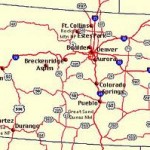Navigating Differentiated Instruction
Anyone with a good nav skills knows their value in planning a family road trip. First, you enter your Destination. Establishing the end goal for the trip lets both driver and passengers in on the plan. Does it reduce the number of “Are we there yets?” Not completely. Second, you have to let your GPS establish the Current Location to search the route to your destination. You may need to adjust that Starting Point. Third, you need to make use of the flexible features. A good navigation system allows the driver and passengers the flexibility to choose the best or fastest routes. It also re-routes if the driver makes a wrong turn, if there is road construction, or if the passengers want to take a side trip to see that interesting historical marker.
A quality English-language arts curriculum designed to differentiate instruction is like a good nav system. First, the program uses diagnostic assessments to establish the Destination. Assessments are based upon the Common Core State Standards. The teacher (or helpful parents) records the assessment data that indicates each student’s Current Location. Knowing what a child knows and does not know informs instructional decision-making. Should the Starting Point be adjusted? Are the learning gaps minimal, requiring brief review, or substantial, necessitating systematic instruction? Are there other students with the same deficits that would permit small group instruction? Is individualized instruction required for some curricular components? Effective instructional resources provide formative assessments that inform the teacher when to veer off course, backtrack, skip ahead, or take those educational side trips. The fastest route is not always the best. Good instructional resources allow parents and teachers to adjust instruction and re-route throughout the road trip.
Old-school English-language arts instructional resources are still using the same worn-out road maps. Everyone has to be on the same stretch of highway at the same time. Both teacher and students must adapt to a cookie cutter curriculum which assumes that every child begins with the same background knowledge, the same level of mastery, and/or the same skill set. Of course, the reality is that some students already know sections of the highway well and wind up repeating the same stretches of road. Highway hypnosis often sets in. Other students can’t even get on the same road-the curricular resources are just too-far above their ability levels.
Teachers committed to differentiated instruction need to invest in curricular resources with good nav systems rather than band-aiding outdated road maps.
*****

The Science of Reading Intervention Program
The Science of Reading Intervention Program: Word Recognition includes explicit, scripted, sounds to print instruction and practice with the 5 Daily Google Slide Activities every grades 4-adult reading intervention student needs: 1. Phonemic Awareness and Morphology 2. Blending, Segmenting, and Spelling 3. Sounds and Spellings (including handwriting) 4. Heart Words Practice 5. Sam and Friends Phonics Books (decodables). Plus, digital and printable sound wall cards, speech articulation songs, sounds to print games, and morphology walls. Print versions are available for all activities. First Half of the Year Program (55 minutes-per-day, 18 weeks)
The Science of Reading Intervention Program: Language Comprehension resources are designed for students who have completed the word recognition program or have demonstrated basic mastery of the alphabetic code and can read with some degree of fluency. The program features the 5 Weekly Language Comprehension Activities: 1. Background Knowledge Mentor Texts 2. Academic Language, Greek and Latin Morphology, Figures of Speech, Connotations, Multiple Meaning Words 3. Syntax in Reading 4. Reading Comprehension Strategies 5. Literacy Knowledge (Narrative and Expository). Second Half of the Year Program (30 minutes-per-day, 18 weeks)
The Science of Reading Intervention Program: Assessment-based Instruction provides diagnostically-based “second chance” instructional resources. The program includes 13 comprehensive assessments and matching instructional resources to fill in the yet-to-be-mastered gaps in phonemic awareness, alphabetic awareness, phonics, fluency (with YouTube modeled readings), Heart Words and Phonics Games, spelling patterns, grammar, usage, and mechanics, syllabication and morphology, executive function shills. Second Half of the Year Program (25 minutes-per-day, 18 weeks)
The Science of Reading Intervention Program BUNDLE includes all 3 program components for the comprehensive, state-of-the-art (and science) grades 4-adult full-year program. Scripted, easy-to-teach, no prep, no need for time-consuming (albeit valuable) LETRS training or O-G certification… Learn as you teach and get results NOW for your students. Print to speech with plenty of speech to print instructional components.
Click the SCIENCE OF READING INTERVENTION PROGRAM RESOURCES for detailed program description, sample lessons, and video overviews. Click the links to get these ready-to-use resources, developed by a teacher (Mark Pennington, MA reading specialist) for teachers and their students.
Get the SCRIP Comprehension Cues FREE Resource:
![]()
Get the Diagnostic ELA and Reading Assessments FREE Resource:![]()
*****